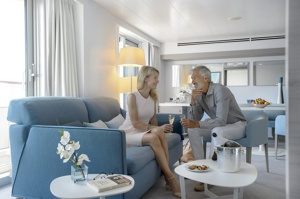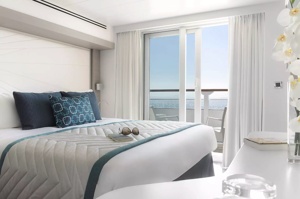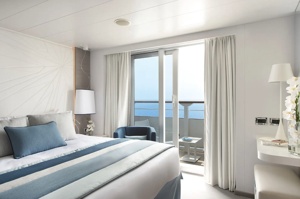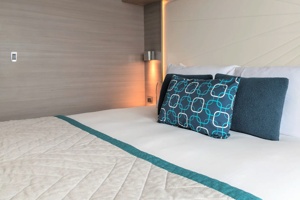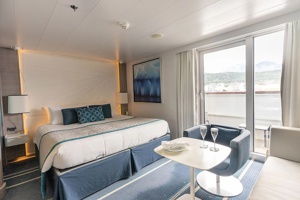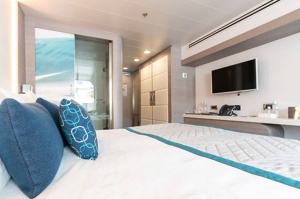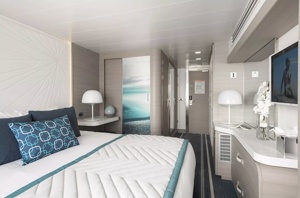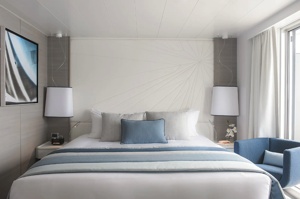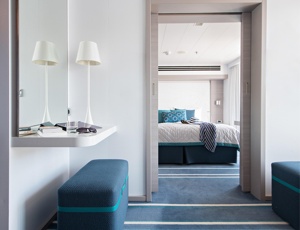Day 1 Nuuk (Godthaab), Greenland
Nuuk, meaning “the cape”, was Greenland's first town (1728). Started as a fort and later mission and trading post some 240 kilometers south of the Arctic Circle, it is the current capital. Almost 30% of Greenland's population lives in the town. Not only does Nuuk have great natural beauty in its vicinity, but there are Inuit ruins, Hans Egede's home, the parliament, and the Church of our Saviour as well. The Greenlandic National Museum has an outstanding collection of Greenlandic traditional dresses, as well as the famous Qilakitsoq mummies. The Katuaq Cultural Center's building was inspired by the undulating Northern Lights and can house 10% of Nuuk's inhabitants.
Day 2 Evighedsfjorden, Greenland
Day 3 Qeqertarsuaq (Godhavn), Greenland
Day 4 Eqi Glacier, Greenland
Day 5 Uummannaq, Greenland
In the iceberg-laden waters surrounding the remote community of Uummannaq it is common to see whales. This area of Greenland is also known for its huge basalt mountains, and the small hunting and fishing village of Uummannaq rests at the foot of the heart-shaped Uummannaq Mountain, a name that translates to mean “in the shape of a seal's heart”. The town of over 1200 people has a granite church and the country's most northerly ferry terminal. The economy of Uummannaq revolves largely around the halibut/fish-processing factory.
Day 6 Disko Bay, Greenland
Day 7 Sisimiut (Holsteinsborg), Greenland
Located just north of the Arctic Circle, Sisimiut is the northernmost town in Greenland where the port remains free of ice in the winter. Yet it is also the southernmost town where there is enough snow and ice to drive a dogsled in winter and spring. In Sisimiut, travelling by sled has been the primary means of winter transportation for centuries. In fact, the area has been inhabited for approximately 4,500 years. Modern Sisimiut is the largest business center in the north of Greenland, and is one of the fastest growing Greenlandic cities. Commercial fishing is the lead economy in the town‘s thriving industrial base.
Day 8 Nuuk (Godthaab), Greenland
Nuuk, meaning “the cape”, was Greenland's first town (1728). Started as a fort and later mission and trading post some 240 kilometers south of the Arctic Circle, it is the current capital. Almost 30% of Greenland's population lives in the town. Not only does Nuuk have great natural beauty in its vicinity, but there are Inuit ruins, Hans Egede's home, the parliament, and the Church of our Saviour as well. The Greenlandic National Museum has an outstanding collection of Greenlandic traditional dresses, as well as the famous Qilakitsoq mummies. The Katuaq Cultural Center's building was inspired by the undulating Northern Lights and can house 10% of Nuuk's inhabitants.



